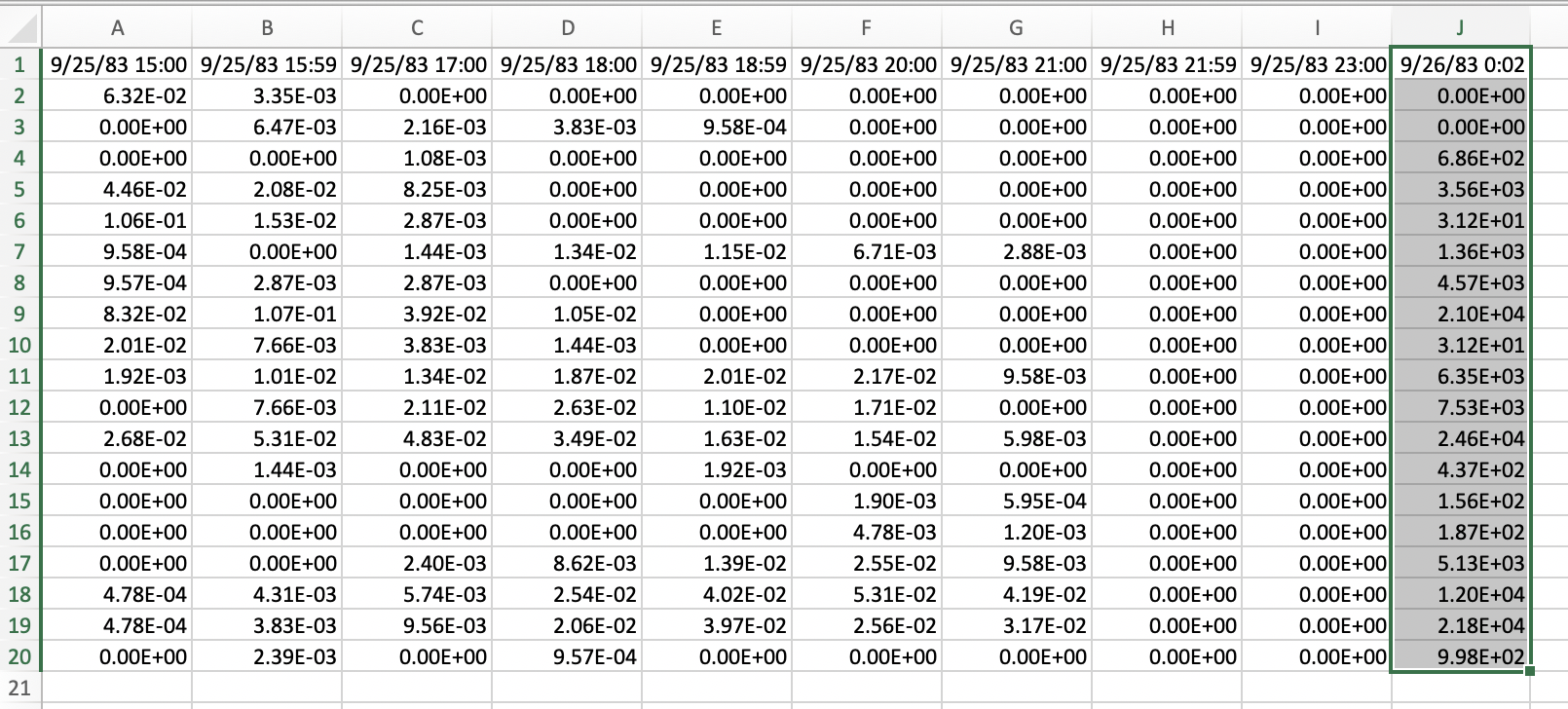

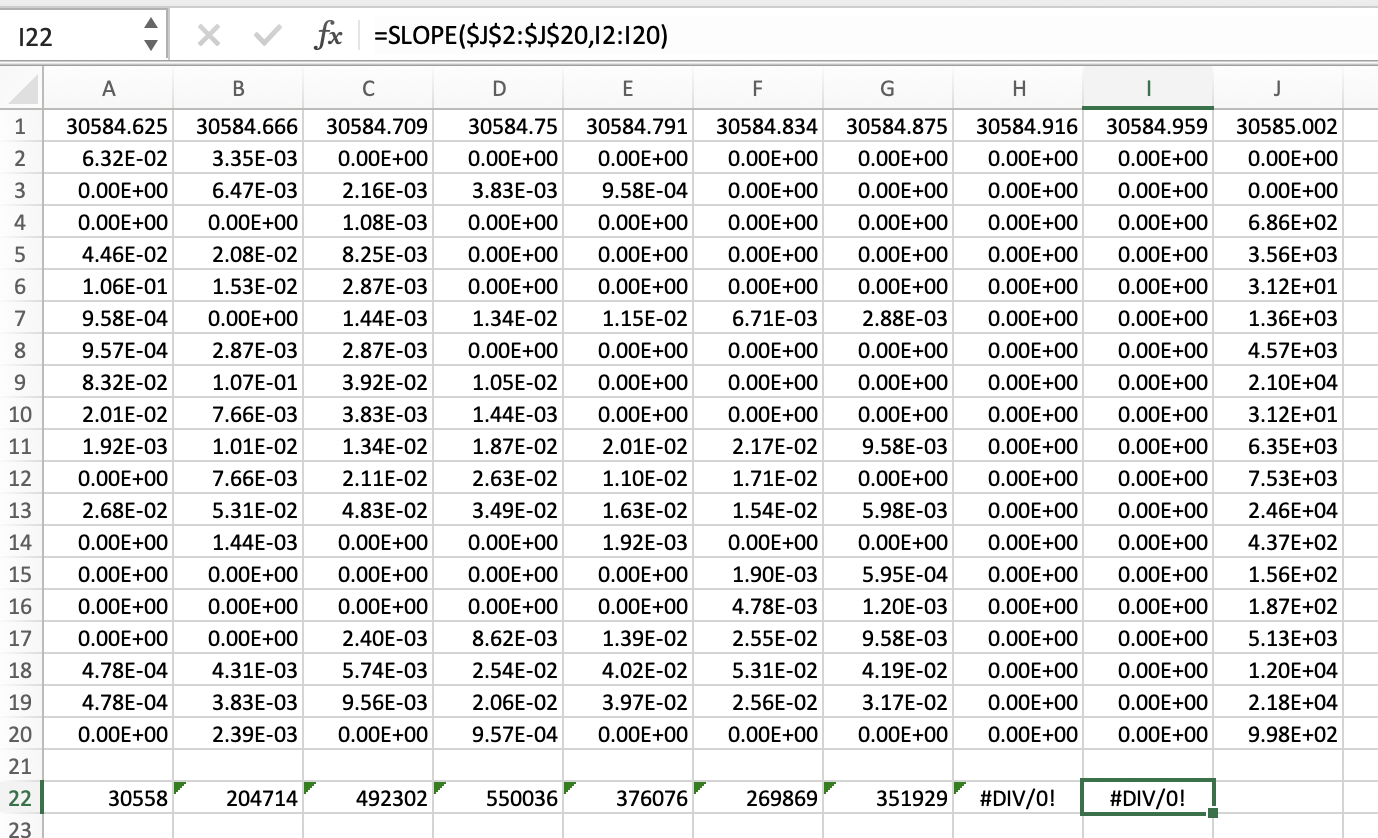
The highest emission rates are for hours 17, 18, and 19 (columns C, D, and E), and although some are almost ten times the actual emissions (67,000), they correspond with the times of the known emissions. The other approaches (SVD & Cost) seem better at resolving the non-emission periods. Although if you compute the correlation for each column, the highest values correspond to the known emission periods.

SVD kblt=1 | SVD default |
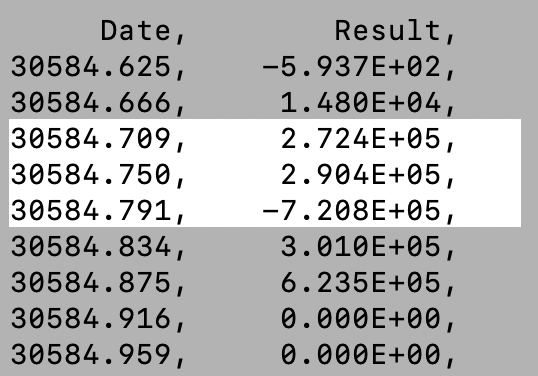 | 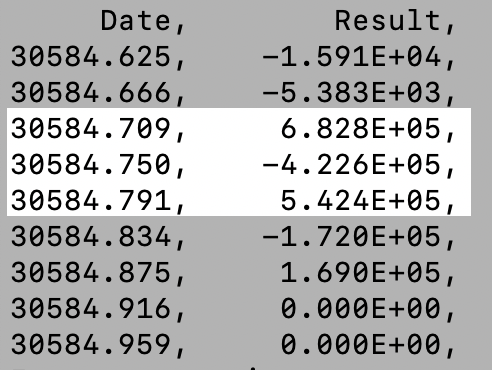 |
Cost function kblt=1 | Cost function default |
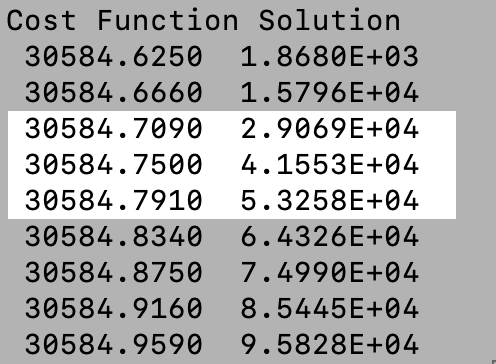 | 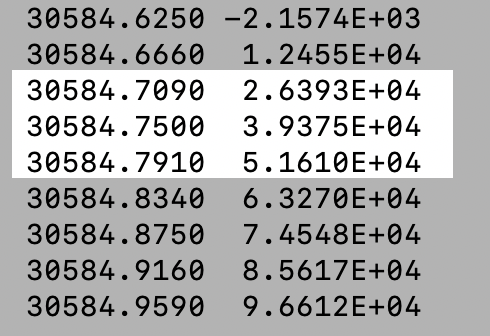 |
Although one would expect that the optimized simulation from the physics ensemble would reduce model errors and result in better estimates of the emissions, this was not entirely the case. The cost function solution was less sensitive to model errors as both solutions were very similar. The SVD solution seemed slightly worse showing more under-prediction, but showed better correspondence with the temporal variations than the cost function solution. Emission estimates are not only sensitive to how well the model performs at locations with above background measurements but also at those locations where only background values were observed. In many of these examples, the sensitivity to the model results is amplified by the low number of measurement data.